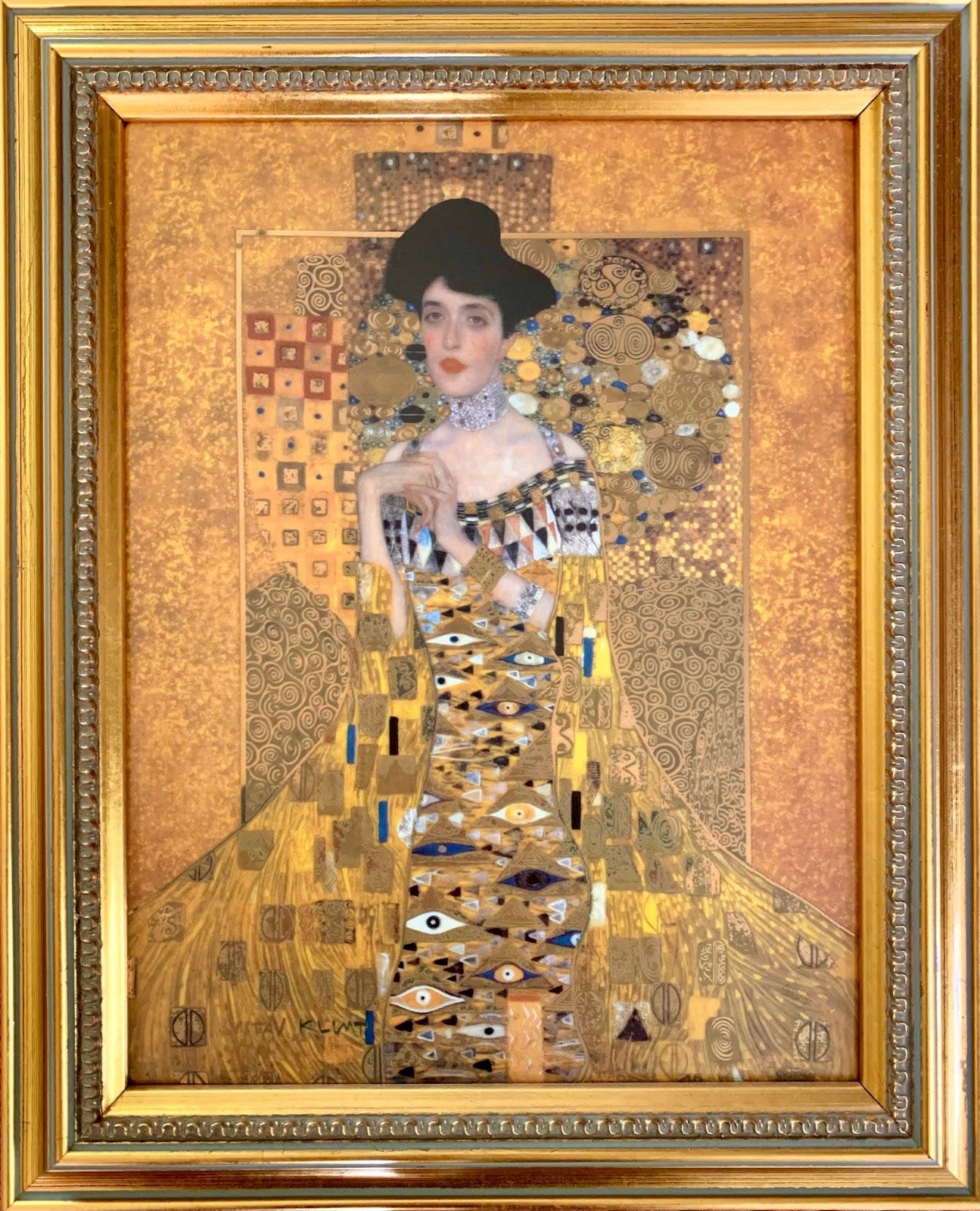The Lesser-Known World of Gustav Klimt
When I got married over 23 years ago, my aunt gave me a beautiful porcelain reproduction of Adele Bloch-Bauer I by Gustav Klimt as a wedding gift.
That was the start of my fascination with Klimt's work.
Humble Beginnings in Baumgarten
Gustav Klimt was born on July 14, 1862, in Baumgarten, a small suburb of Vienna, in the Austro-Hungarian Empire. He was the second of seven children. His father, Ernst Klimt, was a gold engraver, and his mother, Anna, aspired to be a musical performer. Growing up in a family full of artistic dreams but little money made Klimt determined to succeed.
When Klimt was 14, he won a scholarship to the Vienna School of Arts and Crafts, where he learned to paint, draw, and create murals. At first, his art was traditional and followed the rules of the time. But as he grew older, Klimt began to develop his own unique style, mixing traditional art techniques with new ideas from the Art Nouveau and Symbolism movements.
A Symbolist at Heart
Many people know about Klimt’s “Golden Phase,” which included extensive use of gold leaf, but not everyone knows why he did this. Klimt was influenced by Symbolism, a movement that wanted to show the deeper, emotional side of human experiences.
Gold was a symbol of things that last forever, things that are holy and special. By using gold in his art, Klimt made his subjects seem more than just normal people – he made them seem almost magical and otherworldly.
“Whoever wants to know something about me, they should look attentively at my pictures and there seek to recognise what I am and what I want.” - Gustav Klimt
Klimt's paintings were not just pretty pictures. They were filled with hidden meanings and symbols that tell stories about life, love, and what it means to be human.
Each painting was meant to make people feel and think deeply about the mysteries of life. His use of gold highlighted the richness and complexity of human emotions.
He often painted women as the main subject, making them look like beautiful, fancy symbols rather than just regular people. These women appeared as magical beings that represented the beauty and mysteries of life itself.
Klimt's Struggles and Successes
Klimt’s work often sparked controversy. In 1894, he was asked to create three murals for the University of Vienna. However, when he finished his famous "Faculty Paintings," which had naked figures and sexual symbols, many people were shocked and outraged. The university refused to hang the paintings.

Instead of giving up, Klimt decided to leave the academic world and start something new. He helped form the Vienna Secession, a group of artists who wanted to create and promote modern art. This was a big change for Klimt and allowed him to freely explore his unique style and ideas.
Klimt's personal life was as colorful and complex as his art. Although he was said to have fathered 14 children, he never married. He was a private person who rarely discussed his personal affairs.
Famous Paintings
Klimt created many masterpieces.
One of Klimt’s most famous paintings is “The Kiss.” It shows a couple in a loving embrace, surrounded by beautiful gold patterns. The painting celebrates love, closeness, and how two people can become one.
“The Tree of Life,” part of the Stoclet Frieze, is another significant piece. It represents the cycle of life and death, a common theme in Klimt’s work. These paintings are not just beautiful but also tell complex stories.
The story behind Adele Bloch-Bauer I is especially interesting. Adele Bloch-Bauer was a prominent socialite and patron of the arts in Vienna. She came from a wealthy Jewish family. During the Nazi occupation, the painting was confiscated from the Bloch-Bauer family.
After the war, it became the subject of a lengthy legal battle. In 2006, following a landmark court case, the painting was returned to Adele Bloch-Bauer's niece, Maria Altmann. Later, the painting was sold for $135 million to the Neue Galerie in New York, making it one of the most expensive artworks ever sold at that time.
The painting's intriguing story became famous through the 2015 film "Woman in Gold." The movie starred Helen Mirren and told the story of the painting's restitution.
Adele Bloch-Bauer II has also had a fascinating journey recently. In 2006, Oprah Winfrey purchased it at Christie's auction in New York for $87.9 million. In 2016, she sold the painting to a Chinese buyer for $150 million.
Klimt’s Impact on Art
Klimt died on February 6, 1918, at the age of 55 from the Spanish flu. His death marked the end of an era in Viennese art.
Klimt's art, which was neglected for much of the 20th century, is now widely popular and highly regarded. His mix of fine arts and decorative styles helped shape the Art Nouveau movement and modern art. Many artists have been inspired by his innovative approach.
Klimt’s greatest contribution was his ability to express deep emotions and philosophical ideas through art. His work invites us to think about life’s complexities and find beauty in fleeting moments.
“Art is a line around your thoughts.” - Gustav Klimt








Thank you for this interesting biography! I really love his work and had never heard his reason for adding the gold.
Wow…..Oprah made bank with that sale!!
The Tree of Life was painted during Egyptian Revival period, do you think the repeat Eye of Horus was because of Egyptian image popularity? Or was it more of a life stage statement? That symbol was popular in funerary art.